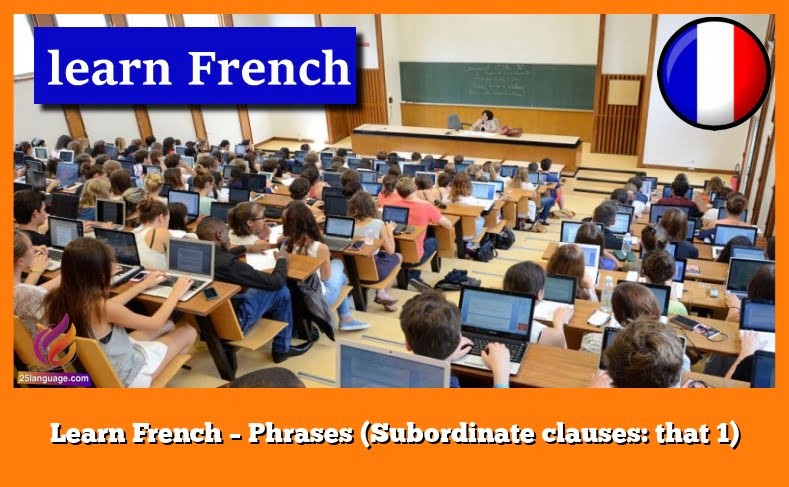French Word Order in Statements and Questions

Mastering French word order is a key step towards fluency, allowing you to express your thoughts clearly in both statements and questions. Unlike English, French has its own set of rules that govern how words are arranged in a sentence.By understanding these patterns, you’ll enhance your interaction skills and gain confidence in speaking and writing. Let’s dive into the fascinating world of French syntax and unlock the secrets to forming coherent, captivating sentences!
Understanding French Sentence Structure: A Guide to Word Order in Statements and Questions
In French, the basic sentence structure typically follows a Subject-Verb-Object (SVO) order, similar to English.However, there are nuances that english speakers must learn to master. Here are some key points regarding the formation of simple statements:
- Subject: The person or thing performing the action (e.g., Je meaning “I”).
- Verb: The action being performed (e.g., mange meaning “eat”).
- Object: the person or thing receiving the action (e.g.,une pomme meaning “an apple”).
for exmaple, the sentence Je mange une pomme. translates to “I eat an apple.” Here, “Je” is the subject, “mange” is the verb, and “une pomme” is the object. In questions, the structure can change.French often employs inversion, where the subject and the verb switch places. For instance, Est-ce que tu aimes le chocolat? means “Do you like chocolate?” Alternatively, you can say Aimes-tu le chocolat?, where “Aimes” and “tu” are inverted, making the question more formal.
| French Example | English Translation | Rule |
|---|---|---|
| Je joue au football. | I play soccer. | Subject-Verb-Object (SVO) |
| Est-ce que tu veux venir? | Do you want to come? | Question structure (Est-ce que) |
| As-tu fini tes devoirs? | Have you finished your homework? | Inversion (Verb-Subject) |
| Où vas-tu? | Where are you going? | Question order (Interrogative adverb) |
Mastering French Word Order: Key Principles and Practical Examples
In French, the typical sentence structure follows the Subject-Verb-Object (SVO) format, similar to English. However,various factors can influence the word order in French. As an example, when forming questions, the inversion of the subject and verb is often used. Key points to remember include:
- In a statement: Je mange une pomme. (I eat an apple.)
- In a question with inversion: Manges-tu une pomme ? (Do you eat an apple?)
- In a question without inversion (using est-ce que): Est-ce que tu manges une pomme ? (are you eating an apple?)
Additionally, adjective placement in French differs from English. Most adjectives follow the noun they describe, but some adjectives precede the noun for emphasis or stylistic reasons. Consider the following rules:
- Common adjectives after the noun: Une voiture rouge. (A red car.)
- Common adjectives before the noun: Un grand homme. (A tall man.)
| French Example | Grammar Rule | English Translation |
|---|---|---|
| Je vois le chien. | Subject-Verb-Object | I see the dog. |
| Est-ce que tu aimes le chocolat ? | Question with est-ce que | Do you like chocolate? |
| Il a une maison bleue. | Adjective after noun | He has a blue house. |
| Une petite fille. | Adjective before noun | A little girl. |
Navigating French Grammar: Strategies for Effective Sentence Formation
Understanding French sentence structure is crucial for effective communication. One of the primary rules to grasp is the Subject-Verb-Object (SVO) order, which is similar to English. For example, in French, you would say « Elle mange une pomme. » (She eats an apple).However, French also allows for greater adaptability especially with pronouns and adjectives.It’s essential to remember that adjectives usually come after the noun (e.g., « un livre intéressant » - an interesting book) unless they are part of the BAGS category (Beauty, age, Goodness, Size) where they precede the noun (e.g., « un beau tableau » – a gorgeous painting). When constructing sentences, ensure that your subject agrees with your verb in person and number. For instance, « Nous allons » (We go) modifies the verb to match the plural subject.
Another notable aspect of French grammar is the use of articles, which precede nouns and reflect their gender and number. The definite article (the) can be « le » for masculine singular nouns, « la » for feminine singular, and « les » for plural nouns. An example would be « le chat » (the cat) for a male cat and « la chatte » (the female cat). Meanwhile, in forming negative sentences, the structure changes slightly from English.Instead of placing “not” after the verb, you encapsulate the verb with « ne » and « pas »: « Je ne comprends pas. » (I do not understand). Mastering the placement of these elements can substantially enhance your fluency and comprehension.
| French Example | Rule | English Translation |
|---|---|---|
| elle mange une pomme. | SVO order: Subject-Verb-Object | She eats an apple. |
| Un livre intéressant | Adjectives follow nouns unless BAGS | An interesting book |
| Nous allons | Subject-Verb agreement | We go |
| Le chat | Definite article for masculine nouns | The cat |
| Je ne comprends pas. | Negation structure: ne + verb + pas | I do not understand. |
Improving Clarity in French: Techniques for Organizing Statements and Questions
To achieve clarity in both statements and questions in French, it’s essential to understand the essential structure of the language. French, like English, follows specific grammatical rules that dictate how sentences are constructed. One of the primary techniques is the use of the correct subject-verb-object (SVO) order. In French, you generally follow this structure: the subject comes first, followed by the verb and then the object. For example:
- Je mange une pomme.(I eat an apple.)
- Tu aimes le chocolat. (You like chocolate.)
When forming questions, french offers various techniques, including inversion, est-ce que, and intonation. Inversion involves swapping the subject and the verb,which is more formal: Parles-tu français? (Do you speak French?). Alternatively, using “est-ce que” makes it easier to form questions: Est-ce que tu parles français? (Do you speak French?). Both methods provide clarity, but it’s crucial to choose based on the context. Here’s a summary of these techniques:
| French Example | Rule | English Translation |
|---|---|---|
| Je vais au marché. | statement: SVO structure | I am going to the market. |
| As-tu des questions ? | Question: Inversion | Do you have questions? |
| Est-ce que tu viens ce soir ? | Question: Est-ce que | Are you coming tonight? |
To Conclude
Conclusion of the Lesson: French Word Order in Statements and Questions
Bravo! You’ve made excellent progress in understanding French word order in both statements and questions. Today, we explored the essential structure that forms the backbone of everyday communication in French. Remember, in simple statements, the standard order is Subject + Verb + Complement, while in questions, we frequently enough start with the verb or use inversion for a more formal tone.
As you practice, keep in mind the role of adjectives, adverbs, and question words, which can further enrich your sentences. The beauty of mastering word order lies in its ability to enhance clarity and expressiveness in your conversation.
Now,as you continue your French journey,be sure to apply these principles in your speaking and writing. Try creating your own sentences or ask questions using the structures we discussed today. Listening to french media, such as podcasts or movies, can also help you reinforce these patterns naturally in context.
Every small step you take will bring you closer to fluency, so continue to practice with confidence! Vous êtes sur la bonne voie – you are on the right track! Keep up the grate work, and soon, you will find yourself communicating effortlessly in French.À bientôt!





























